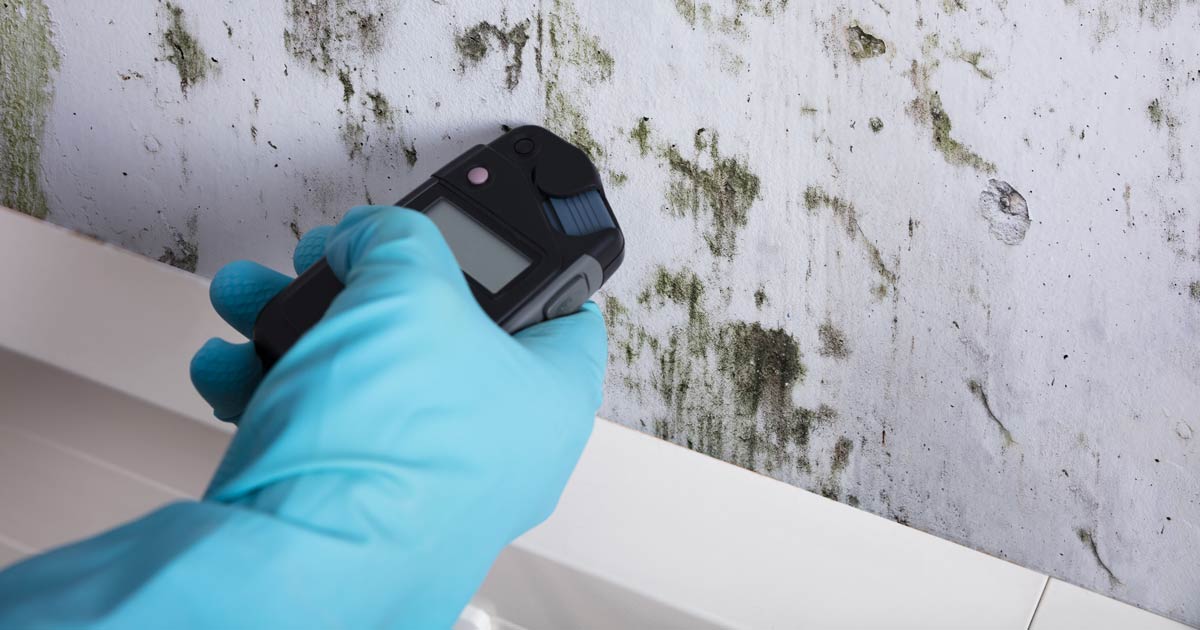Situating Post Remediation Inspection Near Me Services
Wiki Article
Professional Tips for Article Mold Removal Success
In the world of mold and mildew remediation, efficiently getting rid of mold is only half the battle; truth obstacle exists in preventing its reappearance. Post-remediation initiatives play a vital function in guaranteeing a mold-free atmosphere in the long term. By adhering to experienced suggestions and finest practices, people can guard their rooms against mold renewal and maintain a healthy indoor setting. It is in this phase of the removal process that focus to detail and proactive actions genuinely make a distinction.
Display Moisture Degrees Consistently
Normal tracking of moisture levels is crucial in guaranteeing the performance of article mold remediation efforts. After finishing mold remediation treatments, maintaining optimal humidity levels is vital to stop mold re-growth and make certain a healthy and balanced indoor setting. Monitoring moisture degrees permits early detection of any spikes or changes that might possibly result in mold revival. High humidity degrees over 60% create a favorable atmosphere for mold to prosper, making regular checking a proactive step to stop any kind of future mold issues - what to do after mold remediation.In addition, developing a routine schedule for moisture checks, especially in high-risk locations such as basements, kitchens, and shower rooms, is a proactive technique to mold and mildew prevention. By continually monitoring moisture levels, residential property proprietors can successfully reduce the danger of mold and mildew reoccurrence and maintain a healthy and balanced interior environment post-remediation.
Conduct Thorough Inspections Post-Remediation
Complying with the conclusion of mold and mildew removal procedures, it is necessary to carry out thorough inspections to validate the performance of the removal process. These post-remediation inspections are important in making sure that the mold and mildew issue has been efficiently resolved and that there is no reoccurrence or continuing to be mold growth. Examinations ought to be accomplished by certified specialists that have expertise in recognizing mold and analyzing indoor air high quality.Throughout these examinations, numerous approaches such as aesthetic assessments, air tasting, and surface sampling might be employed to thoroughly evaluate the remediated areas. Aesthetic assessments entail a thorough examination of the premises to look for any type of visible indicators of mold development or water damages. Air sampling assists in determining the air-borne mold spore degrees, while surface area tasting can spot mold and mildew particles on surfaces.
Implement Correct Ventilation Approaches
After guaranteeing the efficiency of the mold and mildew remediation process through thorough assessments, the next vital step is to concentrate on executing appropriate ventilation strategies. Ample air flow is important in protecting against mold reoccurrence by managing wetness degrees and advertising air blood circulation.
Appropriate air flow not only help in stopping mold and mildew development however additionally adds to the general health and wellness and comfort of residents. By making certain appropriate air flow throughout the residential property, you can lower the risk of mold regrowth and produce a much healthier living setting.

Usage Mold-Resistant Materials for Fixes
To boost the lasting efficiency of mold remediation initiatives, incorporating mold-resistant products for repairs is vital in minimizing the danger of future mold and mildew growth. Mold-resistant products are designed to stand up to dampness and prevent mold and mildew growth, making them a vital selection for locations prone to moisture and humidity. When repairing locations impacted by mold and mildew, utilizing materials such as mold-resistant drywall, mold-resistant paints, and mold-resistant caulking can assist stop mold recurrence.Mold-resistant drywall is an outstanding option to standard drywall in areas like bathrooms and basements where dampness levels are greater. This kind of drywall has an unique coating that withstands mold development even Post Remediation Inspection near me when subjected to damp conditions. Furthermore, using mold-resistant paints containing antimicrobial representatives can additionally prevent mold development on walls and ceilings.
In areas where dampness is common, such as bathroom and kitchens, utilizing mold-resistant caulking around windows, sinks, and tubs can aid seal out water and prevent mold and mildew from taking hold in cracks and crevices. By investing in these mold-resistant materials during repair work post-remediation, you can considerably decrease the likelihood of future mold issues and preserve a much healthier indoor atmosphere.
Maintain Cleanliness and Address Water Issues
After mold and mildew removal, it is vital to keep a clean environment to avoid the regrowth of mold and mildew. Leakages, water invasion, or high humidity degrees can develop the perfect breeding ground for mold and mildew, so it is important to repair any water-related problems quickly.To preserve sanitation, think about utilizing HEPA filters in vacuums and air purifiers to trap mold and mildew spores and stop their blood circulation in the air. Additionally, making certain proper air flow in locations susceptible to moisture buildup, such as washrooms and cooking areas, can aid keep humidity degrees in check. By staying watchful concerning tidiness and attending to water problems promptly, you can effectively avoid mold reinfestation and keep a healthy interior atmosphere.
Conclusion

In the realm of mold remediation, successfully eliminating mold and mildew is just half the battle; the real difficulty exists in preventing its reappearance. After finishing mold and mildew removal procedures, preserving optimum humidity degrees is important to avoid mold re-growth and ensure a healthy and balanced interior environment. High humidity degrees over 60% create a helpful environment for mold to grow, making regular checking a proactive procedure to avoid any future mold and mildew concerns.
To improve the long-lasting effectiveness of mold and mildew removal initiatives, including mold-resistant materials for repair work is essential in minimizing the threat of future mold growth. After mold and mildew remediation, it is critical to preserve a clean setting to stop the regrowth of mold and mildew.
Report this wiki page